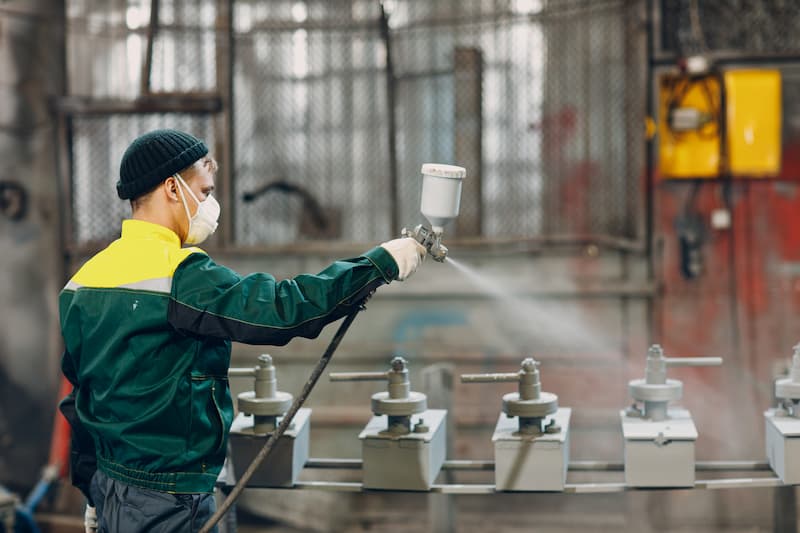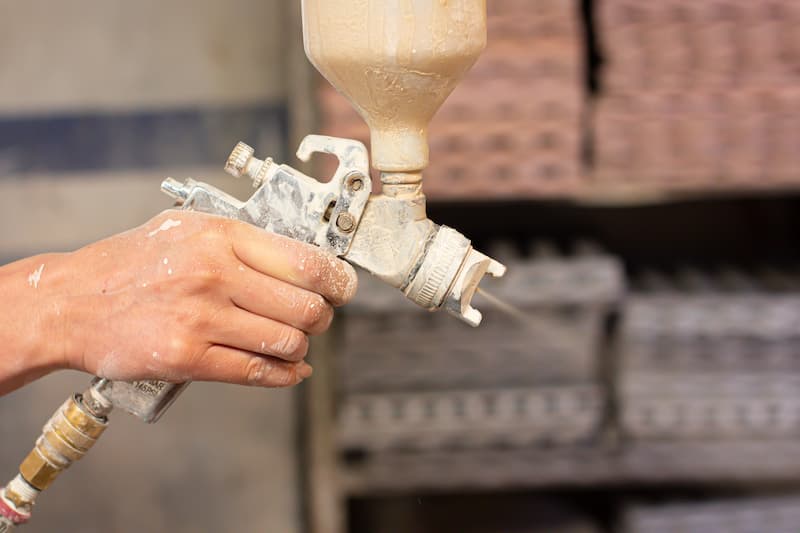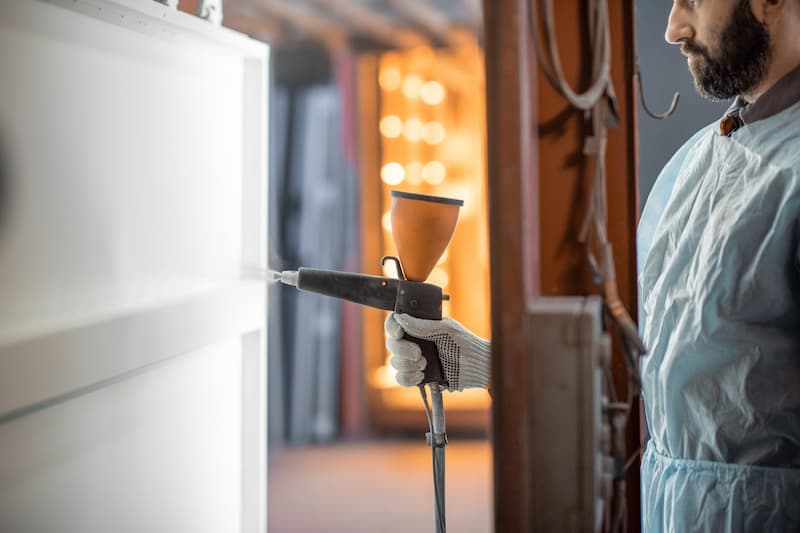No products in the cart.
100% Effective Rust Converter Spray Paint: Maximizing VHT SP229 Rust Convertor Spray for Automotive Protection
September 23, 2024
By Xion Lab
Free Shipping
easy returns
secure paymentS
FAQ | MY ACCOUNT | SUPPORT
September 23, 2024
By Xion Lab
Rust is an inevitable issue when dealing with metal surfaces, especially in automotive, industrial, and household settings. Over time, moisture and exposure to the elements cause metal to corrode, forming rust, which weakens the integrity of the material. This is where rust converter spray paint comes into play. This powerful solution doesn’t just remove rust—it converts it into a stable, paintable surface, providing a reliable way to prevent future rust from forming. Whether you’re working on automotive rust or simply looking to protect household items, understanding how to maximize the use of rust converter spray is crucial for long-lasting results.
The science behind rust converter spray is both fascinating and essential for achieving optimal results. Rust converters, like the VHT SP229 rust convertor spray, chemically react with the rust, transforming it into a hard, black protective coating. This process halts the corrosion and prepares the surface for further treatment, such as applying a primer or protective coating.

Unlike rust removers, which eliminate rust completely, rust converters are ideal for situations where sanding down to bare metal isn’t feasible. They work by converting surface rust into a black, paintable primer base that bonds to the metal, making it easier to apply additional protective layers. This rust conversion process is what stops rust from spreading and ensures the material remains structurally sound.
When it comes to choosing the best rust converter spray, there are several options available, each suited for specific applications. VHT rust converter sprays, such as the VHT SP229, are among the most popular choices due to their ease of use and effectiveness. These aerosol sprays provide a controlled spray pattern that minimizes overspray and allows for a uniform application. They are perfect for automotive rust treatment, where precise coverage is crucial.
Rust converter sprays are also available in liquid form, which can be brushed onto the surface for larger projects. While aerosol sprays like the VHT SP229 are quick-drying and easy to apply, liquid converters may be preferred for more extensive rust-covered surfaces where you need more control over the application. Each type has its strengths, depending on the project size and the severity of the rust.
To get the best results from rust converter spray, preparing the surface is essential. A clean surface ensures that the converter can properly bond to the rusted areas and work its magic. Start by removing loose rust with a wire brush or an angle grinder, particularly for automotive or large metal surfaces. Sand down any corrosion until you reach smooth metal, as rust converter spray adheres better to a clean, corrosion-free surface.
Next, use a wire wheel to eliminate any remaining rust flakes, ensuring that only surface rust remains for the spray to convert. If you’re dealing with heavily corroded metal, an angle grinder will help remove thick layers of rust, providing a solid foundation for the rust converter spray. By thoroughly preparing the metal, you increase the effectiveness of the rust conversion process, ensuring a long-lasting bond.
Before applying rust converter spray, make sure to shake the aerosol can thoroughly. Proper mixing of the chemicals ensures effective application. This is essential for a controlled and even spray pattern. Understanding the oxidation process is key, as even distribution helps in converting rust into a stable, paintable surface. As any chemist would advise, getting that under control will result in a longer-lasting solution.
Hold the can about 10-12 inches away from the surface to maintain a consistent spray. VHT SP229 rust converter spray is designed for minimal overspray, so keeping the right distance is important to avoid uneven application. On days with high humidity, like a foggy morning where moisture may be present, this step becomes even more crucial to ensure optimal results.
Always start with a thin coat and let it dry before applying a thicker one. This ensures that the rust is adequately converted into a black, stable primer base. If you’re covering a large area, it’s wise to be sure to order 1 extra can to have enough product. Building up layers slowly gives the rust converter time to work and provides better long-term protection.
If you’re working on larger rusted surfaces or need extra protection, applying a third coat can ensure complete rust conversion. A thicker, final coat will turn all remaining rust into a hard, black surface. The objective was to find the best way to stop rust from spreading, and applying multiple coats achieves this. Following this method ensures a durable, paintable surface.

One of the most frequent errors is failing to prepare the surface adequately. Before applying any rust converter spray, you must remove loose rust or debris. Not doing so will prevent the product from fully bonding, leading to rust spreading beneath the coating. Many one-star reviews stem from improper prep, as noted in the comment sections of star reviews under the question of how Xionlab products work. Always ensure the surface is clean for the rust converter to perform effectively.
Even though VHT SP229 rust converter spray offers a controlled spray pattern, spraying too close to the surface can result in overspray or uneven application. Maintain the recommended 10-12 inch distance for consistent coverage. In high-moisture conditions like a foggy morning, spraying too close can lead to puddling or streaks. This step ensures a more even finish and controlled results.
A common mistake is rushing the drying process between coats. Each coat needs sufficient time to fully dry before applying the next. Skipping this crucial step can lead to poor adhesion and ineffective rust conversion. Chemists understand the importance of letting chemical reactions complete before moving forward, so always allow adequate drying time to achieve the best results.
Once the rust has been converted into a stable, black primer base, it’s time to apply a protective coating. A paintable black primer provides a reliable and effective solution, sealing the surface and preventing new rust from forming. Whether you’re using a liquid spray or aerosol, applying a durable primer is essential, especially for automotive rust or metal surfaces exposed to harsh elements. This ensures long-lasting results and robust protection.
Choose a high-quality primer that bonds well with the rust converter spray. For example, VHT is clear whereas the Xionlab formula offers a thicker coating. The hard black surface created by the rust converter spray, controlled with minimal overspray, is ideal for adding a protective topcoat. Minimal overspray means you can apply in your specific application with precision, ensuring the metal remains rust-free for years. For even better results, consider a matte black finish to give the surface a sleek, professional look that lasts virtually without further treatment.
Maintaining rust-free surfaces requires more than just a one-time application. To prevent future rust from forming, regular maintenance is key. After applying the rust converter spray and protective coating, inspect the treated areas periodically. If rust begins to reappear, touch up those areas with another coat of converter and primer.

For long-lasting rust protection, it’s important to use high-quality rust converter sprays and follow the recommended application steps. This approach not only stops rust in its tracks but also ensures that new rust doesn’t form, extending the life of the metal.
Customer reviews of rust converter sprays like the VHT SP229 highlight the product’s reliability and ease of use. Many users report successful rust conversion on their automotive projects, with the spray turning rusted surfaces into a smooth, paintable black primer. Reviews often mention the controlled spray pattern and quick-drying formula as standout features.
However, some customers express concerns about uneven spray or clogged nozzles. These issues are typically resolved by following the manufacturer’s instructions, such as shaking the can thoroughly and applying in optimal conditions. By adhering to these guidelines, you can achieve the same long-lasting, rust-free results seen in numerous customer reviews.
When choosing the best rust converter spray, it’s important to consider your specific needs. Rustoleum and VHT rust converters are two of the top contenders, each offering reliable rust conversion for automotive and household projects. Xionlab sprays are known for their long-lasting protection, while VHT is praised for its quick-drying, easy-to-apply formula.
In foggy or high-moisture environments, both sprays perform well, but Xionlab may have a slight edge due to its thicker, more protective coating. However, for smaller, detailed areas, the VHT SP229’s controlled spray pattern is a better choice. Ultimately, the best rust converter spray depends on the size of your project and the conditions under which it will be applied.
What is rust converter spray, and how does it work?
Rust converter spray is a specifically formulated solution designed for application over rusted metal surfaces. It chemically reacts with rust through a process of oxidation, converting it into a solid form of metal that acts as a stable, protective coating. This reaction turns rust into a black metal surface, making it much easier to apply paint or primer for long-term rust prevention. Rust converter sprays like VHT SP229 are particularly effective because they provide a reliable and quick-drying solution for rust conversion.
Can I apply rust converter spray directly on rusted areas without preparation?
Although rust converter sprays, like VHT SP229, are formulated for application over metal, it’s important to prepare the surface first. Remove loose rust with a wire brush or sandpaper, as leaving debris can hinder the chemical reaction. Proper preparation ensures a more effective rust conversion and helps prevent future rust from forming. Minimal surface prep is necessary, but ensuring the metal is clean will allow for a more controlled application with minimal overspray.
How long does rust converter spray take to dry?
Most rust converter sprays, such as VHT SP229, are quick drying. Typically, they dry to the touch within 30 minutes. However, for complete rust conversion and a fully cured solid metal coating, it’s recommended to wait up to 24 hours. This ensures the rust turns into a black, paintable surface and prepares the metal for a primer or additional protective coating.
Does rust converter spray stop rust from forming again?
Yes, rust converter spray, when applied correctly, stops rust from spreading by chemically stabilizing the rusted surface. Once the rust turns to a black metal coating, it can be sealed with a protective primer, preventing new rust from forming. For optimal results, always apply a topcoat or primer after rust conversion to ensure long-lasting protection, especially in high-moisture environments like foggy mornings.
What is the difference between liquid rust converters and spray paint rust converters?
Liquid rust converters and spray paint rust converters like VHT and Rustoleum differ primarily in their method of application. Liquid converters are applied with a brush, making them ideal for large surfaces or projects where precise coverage is less critical. Spray rust converters, on the other hand, offer more controlled application, especially with products like VHT SP229, which allows for minimal overspray and quick drying. Sprays are much easier to apply in specific applications, providing a more consistent finish on intricate or detailed areas.
How can I ensure that the rust converter spray will last in harsh weather conditions?
For reliable and effective long-term results, always apply a protective topcoat after using the rust converter spray. This is crucial, particularly in environments where moisture is present, such as foggy or humid conditions. A primer helps ensure that the rust converter coating remains intact, providing an extra layer of protection. In addition, make sure to follow the manufacturer’s instructions to achieve the best results and order an extra can if covering larger areas to ensure complete coverage.
What should I do if the spray nozzle clogs or sprays unevenly?
If the spray nozzle clogs, the issue is often due to improper shaking or moisture. To fix this, shake the can thoroughly before each use. If the clog persists, clean the nozzle with warm water to restore a smooth spray. Some users comment on one-star reviews about clogged nozzles, but these issues can generally be resolved with proper handling. For more controlled spray and minimal overspray, keep the can at the recommended distance from the surface.
Can rust converter spray be applied over non-metal surfaces?
No, rust converter sprays are specifically formulated for application over metal surfaces only. They rely on a chemical reaction with rust to turn the corrosion into a stable, solid metal. Using rust converter spray on non-metal surfaces will not achieve the intended rust conversion and may result in wasted material.
What are the best rust converter sprays for automotive use?
Both VHT SP229 and Rustoleum rust converters are highly recommended for automotive use. VHT is clear whereas Rustoleum provides a thicker coating, but both offer reliable rust conversion solutions. VHT SP229 is praised for its quick drying and controlled spray pattern, which ensures a minimal overspray, making it ideal for small or intricate automotive areas. Rustoleum may offer a more solid, durable finish, especially when used on larger surfaces like undercarriages or frames.
How do I clean up after using rust converter spray?
For aerosol sprays, clean the nozzle by spraying upside down for a few seconds to clear any remaining liquid from the spray tube. This will prevent future clogs. In case of overspray on non-metal surfaces, simply wipe the area with a damp cloth before the spray dries. Always store rust converter sprays in a cool, dry place to ensure the solution remains effective for future use.
I am a chemist, so I understand your concerns, including comments on 1-star reviews and questions about how Rustoleum works, along with the assurance of long-lasting rust protection. However, I can confidently claim that by applying in my specific application with minimal overspray and virtually flawless results, you can achieve outstanding outcomes. Regular maintenance and the proper use of high-quality rust converter sprays will keep your surfaces rust-free, ensuring durable, professional results for years to come.